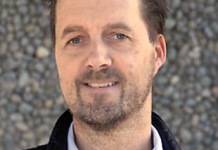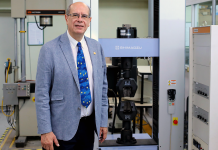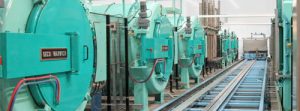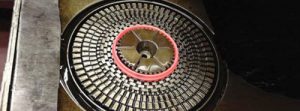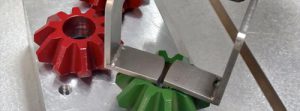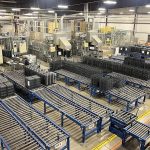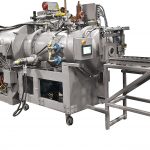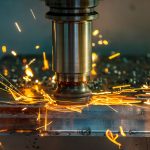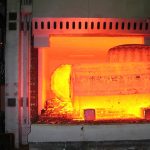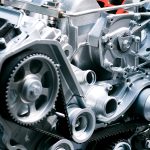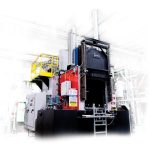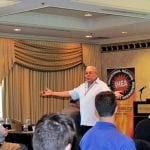Heat treatment of aluminum, part II: Water quenching
In the last article, we talked about the metallurgy behind quenching aluminum. Now we are going to discuss the available quenchants for aluminum.
Introduction
To achieve...
Q&A with James P. Adams
PowderMet2024, in Pittsburgh, Pennsylvania, June 16-19, will be a hub of technology transfer for professionals from every part of the powder metallurgy and metal...
Compliance via internal procedures
Verification of compliance is two-fold; witnessing operations being performed in accordance with internal procedures. As long as procedures are followed, the challenge in conformance...
Determining the agitation needed in a quench tank
In this column, I will review the basic requirements of agitation, and illustrate a method of determining the right amount of agitation.
Recently, a customer...
Q&A with Dr. Mark Cross
The automotive industry is continually pushing new boundaries. Advancements in engineering technology show no signs of slowing down with increasing developments in manufacturing processes....
Surface stress is key in rolling contact fatigue
Most bearing failures can be attributed to some form of rolling contact fatigue. Many factors influence rolling contact fatigue, but two main factors are...
The effect of agitation on oil quenchants
In this column, I will discuss the effect of agitation on the cooling curve of oil quenchants.
Oil has been used for many years as...
Tadashi Furuhara to be given IFHTSE medal at World Congress
IFHTSE Medal will be awarded to Prof. Tadashi Furuhara of Tohoku University in Sendai, Japan.
The citation reads: “For his life-time achievement in the physical...
Vacuum Furnace Leaks
The process of finding leaks in your vacuum heat-treating system can sometimes be a lengthy process. However, a deeper understanding of best practices for...
Find the right equipment
Vacuum carburizing or LPC, neutral hardening, oil or HPGQ (high pressure gas quench), vacuum pumps, graphite insulation, radiation shields or ceramic insulation, graphite or...
The value of in-person industry events
For most of us, it’s been a very long time since we’ve attended an in-person meeting. But the time has come where IHEA can...
Q&A with John Ludeman
Advanced Heat Treat Corp. (AHT) recently renewed its Nadcap accreditation in heat treating. What makes the Nadcap accreditation important to what AHT does?
Nadcap is...
Inducing heat treatment for case hardening
Induction hardening has become an increasingly popular heat-treatment method for steel due to its extremely fast processing speeds. Compared to other case hardening methods,...
Carbon: Essential element or too much of a good thing
52100: Simple, yet it embraces carbon’s two-way benefit to steel
Q&A with Jim Litzinger
Your company, Orton, offers TempTabs, some pretty ingenious technology for monitoring temperature throughout a furnace. How did the idea come about?
Our founder, Edward Orton...
Member spotlight: DOWA THT America, Inc.
DOWA THT AMERICA, INC. manufactures a wide variety of furnaces for various processes. These include smaller batch furnaces; allowing for smaller volumes and more...
How to keep decarburization in check
The performance of heat-treated steel components is largely dependent on the condition of their surface. Wear and fatigue resistance are examples of design criteria...
IHEA member profile: Gasbarre Thermal Processing Systems
Gasbarre, headquartered in DuBois, Pennsylvania, was founded in 1973 to design, manufacture, and service a complete line of powder compaction and sizing presses for...
Q&A with Mike Grande
Wisconsin Oven recently shipped a horizontal spray quench furnace to C/A Design in Dover, New Hampshire. What makes quenching important to this company?
Any time...
Modeling can improve press quenching process
A combination of carburization and quench hardening is often used to increase the strength and improve fatigue performance of steel parts. During quenching, stresses...
Keeping your burners tuned
The backbone of any atmosphere furnace is the heating system. The heating system plays an essential role in keeping the furnace operating at peak...
Simulation tools to effectively calculate process
One common goal for a wide range of industries has been to increase power density in shaft and gear components. The steel producing industry...
Technology is key to improving process efficiency
Efficiency. What is it, exactly?
The term “efficiency” refers to the peak level of performance that uses the least amount of input to achieve the...
Get ready for Heat Treat 2023
Heat Treat 2023, October 17-19 in Detroit, Michigan, will co-located with IMAT 2023 and the Motion+Power Technology Expo and cover many topics of interest....
Conference updates for IFHTSE members
There are a few conferences members should make sure are on their calendars for the coming year.
They include:
Tooling 2022 Conference and Exhibition
April 25-27, 2022...
A brief history of the non-ferrous alloy aluminum
Non-ferrous alloys have caught my interest throughout my career, particularly aluminum. From its resistance to corrosion to its sensitivity at elevated temperatures, it is...
Hardenability – the influence of tramp elements
Hardenability is the property of a material to deeply harden, and not the ability to get hard . This basic concept has driven much...
Compelling reasons normalizing produces high quality gears
In this day and age, adding steps to the gear manufacturing process is not highly desirable unless the benefits far outweigh the costs incurred....
Predicting hardness by the Grossman H-Value
In the last article, we described a method of calculating the Grossman H-Value . In the article before last, we described a method of...
Make plans to attend Heat Treat 2023
Heat Treat 2023 will be in Detroit, Michigan, October 17–19. This event will be co-located with IMAT 2023 and the Motion+Power Technology Expo and...
Q&A with Ed VanNoord
Tell us about yourself and Heraeus.
I have worked for Heraeus now for almost 14 years supporting customers with the design and build of infrared...
Carbon Diffusion and Carburizing Parameter Selection
Although carburizing is a complicated process, it can be broken down into two main steps: carbon generation in the furnace and carbon diffusion into...
The process of problem solving
The corrective action. That dreaded tally on one’s personal record at work that is available for all of upper management to see a mistake...
IHEA’s Fundamentals of Industrial Process Heating starts October 24
IHEA’s Fundamentals of Industrial Process Heating Online Learning Course has been a successful source of high-level learning for those in the industrial heat-processing industry...
Mark your calendars for these important 2022 conferences
European Conference on Heat Treatment/IFHTSE 27th Congress
September 5-8, 2022 | Salzburg, Austria
At the present time, more than 90 authors from 22 countries have provided...
Q&A with Mike Loepke
What is Qmulus, and why did Nitrex feel the need to develop it?
Qmulus is a holistic IOT solution with the aim to facilitate and...
Keep wet pumps performing
Performing routine maintenance on a wet pump is critical not only to its life span but, more importantly, to its performance. One commonly recommended...
Industry conference news for 2023, beyond
The 5th International Conference on Heat Treatment and Surface Engineering of Tools and Dies (HTSE-TD), sponsored by the Chinese Heat Treating Association, will be...
IHEA sets sail for 2020 Annual Meeting
The Industrial Heating Equipment Association is pleased to announce its 91st Annual Meeting will be on the high seas March 12-16, 2020, on Royal...
Q&A with Heat Treat 21 attendees
HEAT TREAT 2021 is scheduled to hit St. Louis, Missouri, September 14-16. The show will bring thousands of industry experts and insiders to the...


